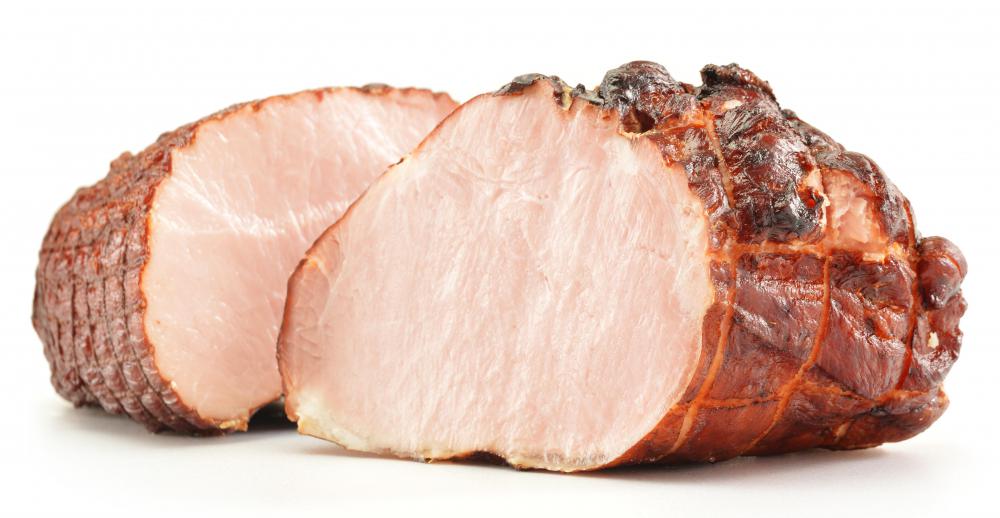At DelightedCooking, we're committed to delivering accurate, trustworthy information. Our expert-authored content is rigorously fact-checked and sourced from credible authorities. Discover how we uphold the highest standards in providing you with reliable knowledge.
What is Tapas?
Many people who have read foodie magazines or checked out a travel show may have heard of tapas, but didn't follow up on finding out exactly what they are. Of Spanish origin, they are "little dishes," that is, snack-size foods meant to be eaten between meals. They are still extremely popular in Spain and there are tapas bars in the U.S., as well.
The history of tapas is an old one. It probably dates from the Middle Ages, when field workers would take a small meal with them into the fields, meant to be eaten as they worked or on a short break. Olives, bread and cheese, perhaps with a small slice of ham or other meat, often comprised this small meal.

As customs do, eating tapas evolved, becoming a social ritual in small restaurants all around Spain. Some say that the name came from a slice of ham covering a glass of sherry — perhaps to keep out flies. Another advantage of serving cured meats is that they created a greater thirst, making the customers purchase yet more wine.
Nowadays, tapas may be eaten as a snack or as a full meal. They may be thought of as a sort of Spanish version of dim sum. Diners can order dishes individually, or as a group of related dishes. Olives are still popular ingredients, as are cheese, ham and other foods that lend themselves well to small snacks.

Some popular tapas dishes include herbed goat cheese with ham and/or shrimp, chickpeas and spinach, mushrooms and cheese, small servings of Spanish omelet, tuna and olive crostini, and a host of other savory tidbits. Recipes are available online or in cookbooks. A cook wanting to serve a tapas buffet should provide several kinds of cheese, two or three meats and finger-sized vegetables such as mushrooms, olives, carrots and even pickles. Two or three small breads should also be provided. Diners can then make up their own combinations, according to their individual tastes.
AS FEATURED ON:
AS FEATURED ON:



















Discussion Comments
What is the name of the Spanish tapa that is basically fried potatoes with tomato-garlic sauce and cheese on top? I love that dish, it's so amazing!
@donasmrs-- I think the concept of tapas have been a little obscured by restaurants in the US. Tapas are not really meant to fill you up, they are small, light snacks in between meals or to accompany alcohol. But some restaurants only offer tapas as food and if people go there for an actual meal, they are disappointed with the portions.
My family is originally from Spain and we usually eat tapas in the evening, after dinner. We have dinner early and we get hungry a couple of hours afterward. So usually we make some omelets, put some cheese, olives, tomatoes, bread in plates and eat from them. It's not a full meal, it's just light food that's meant to curb your hunger.
I saw a really funny banner for a restaurant online. The banner said "Tapas, This Is Not How The Spanish Really Eat."
I've always wondered about this. I've been to a couple of tapas restaurants but I wasn't too impressed because the food portions were just so small. I always leave a tapas restaurant hungry, I never seem to get enough to eat.
I know, I could just order more tapas, but tapas restaurants are not that affordable. If you ask for three tapas, that's about the cost of a full meal but it's not enough to fill you up.
It surely would, Mendocino.
The Spanish have only learned to cook food in the last few hundred years or so.
Tapas is a relatively new concept in Spain - only about 600 years old or so.
That kind of coincides with the info they gained on cooking, spices and food from North African cultures.
Although they'd been trading with each other (the North Africans and the Spanish) longer than that, the wily Arabs dominated trade, and kept many gourmand secrets from the Spanish for a long time.
Indeed, and this so-called 'spanish' practice has existed in many ancient African, Subcontinental, Persian (pre-Islam) and South-east Asian cultures.
My take is that it's easier to market something with a Spanish or French name because people are conned into thinking that such prefixes denote something exotic - much like the English used to sell all kinds of stuff to their countrymen with prefixes like Chinese, Japanese or Indian - to evoke the correct market response.
I wonder if tapas in another part of the world would be referred to as pupus in Hawaii for example, or possibly even finger foods?
Post your comments